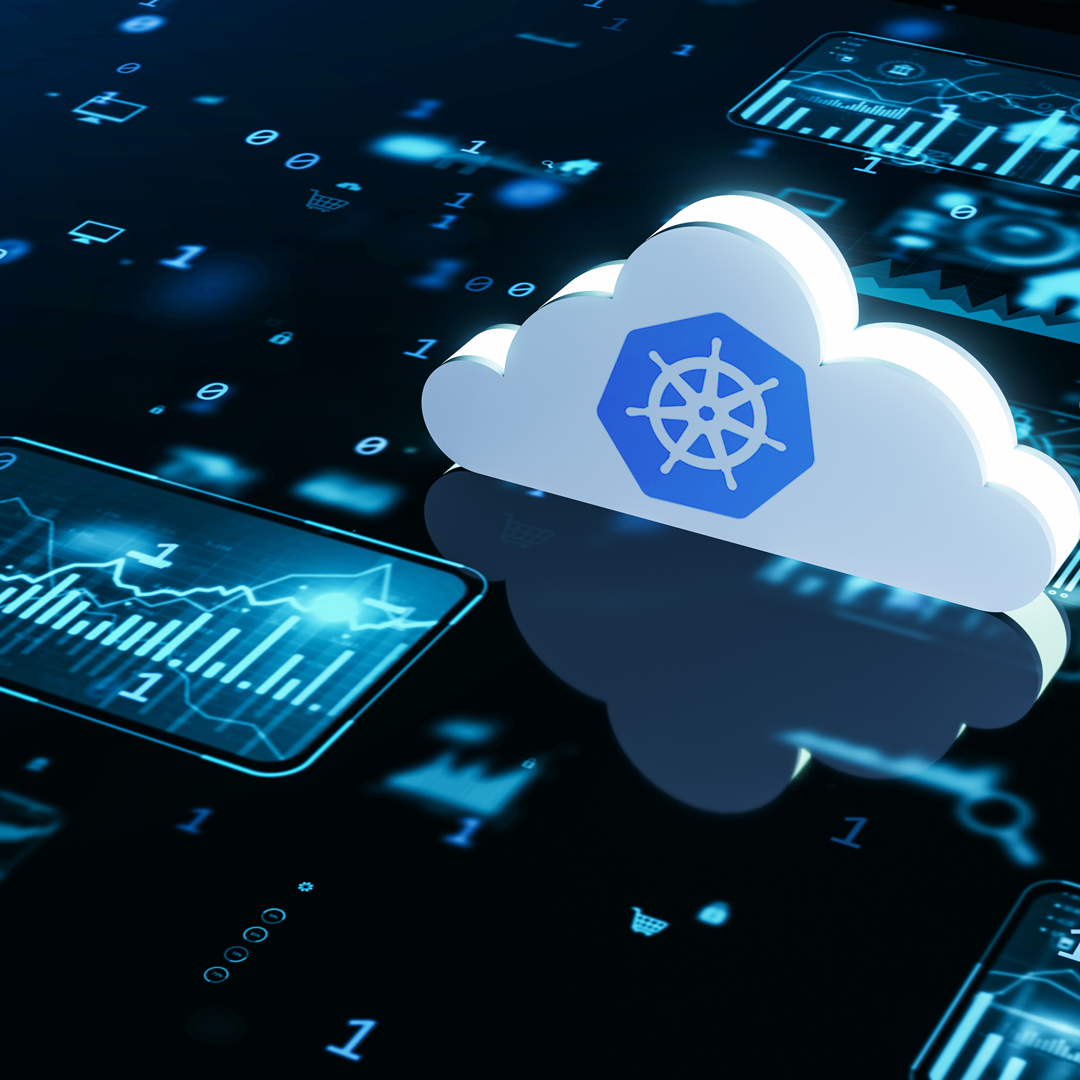Infrastructure as Code (IaC) has transformed how infrastructure is provisioned and managed. What once required manual intervention and hours of scripting is now automated, versioned, and repeatable. IaC has become the backbone of modern DevOps practices, allowing organizations to deploy, scale, and manage infrastructure with efficiency, consistency, and speed.
This guide compares the top IaC tools of 2025—Terraform, Pulumi, AWS CDK and the CloudFormation—to help CTOs and engineering leaders choose the right solution for their team’s workflows and long-term cloud strategy.
The rise of Infrastructure as Code
Infrastructure as Code represents a paradigm shift in how organizations approach infrastructure management. By defining infrastructure through code rather than manual processes, IaC brings software development practices to infrastructure management, including version control, testing, and continuous integration, which have become standard operating procedures.
As organizations embrace multi-cloud strategies, they need Infrastructure as Code to maintain consistency across diverse environments without being burdened by each cloud provider’s proprietary tooling. The shift toward GitOps further aligns infrastructure changes with standard code review, testing, and collaboration workflows.
Security is also becoming embedded directly into infrastructure definitions. This “shift left” approach catches vulnerabilities during development instead of in production, helping prevent major mishaps.
Benefits of IaC
The benefits of IaC are clear and compelling:
- Consistency and repeatability: Infrastructure as Code eliminates configuration drift and ensures environments are identical across development, testing, and production.
- Speed and efficiency: IaC helps in provisioning complex infrastructure in minutes instead of days or weeks.
- Documentation by default: IaC code itself serves as living documentation of your infrastructure.
- Risk reduction: IaC enables testing of infrastructure changes before deployment and rollback easily when issues arise.
Recent trends driving IaC demand
- Platform engineering adoption: Organizations are building internal developer platforms, with IaC as the foundation.
- GitOps maturity: Infrastructure changes follow the same workflows as application code, that is, review, test, and approve before deployment.
- Security automation: Infrastructure security shifts left, with policy-as-code becoming a standard practice.
- Multi-cloud complexity: Organizations need tools to manage infrastructure across diverse environments consistently.
Meet the contenders: today’s leading IaC tools
The Infrastructure as Code landscape features several robust solutions, each with distinct strengths.
Terraform (by HashiCorp)
An open-source, declarative tool with a provider-based architecture supporting multiple cloud platforms. Uses HCL (HashiCorp Configuration Language).
Pulumi
A modern platform that uses general-purpose languages like TypeScript, Python, Go, and .NET. Ideal for developer-centric workflows.
AWS Cloud Development Kit (CDK)
An AWS-native framework allowing infrastructure definition through familiar programming languages. Translates to CloudFormation under the hood.
AWS CloudFormation
AWS’s native JSON/YAML-based IaC service, widely used in regulated and legacy environments.
Terragrunt
A thin wrapper for Terraform that simplifies multi-environment management, enforces DRY principles, and provides robust orchestration across modules. It not the IaC tool by itself, but we highly recommend using it for any projects with the Terraform/OpenTofu.
Other IaC solutions
Other notable mentions include Ansible (hybrid automation), Crossplane (Kubernetes-native IaC), and Microsoft’s Bicep (an alternative to ARM templates).
Evaluation criteria for CTOs and engineering leaders
When selecting Infrastructure as a Code tools, decision-makers should consider several critical factors:
- Ease of use / learning curve
- Language support & developer experience
- Cloud compatibility / multi-cloud readiness
- Modularity & reusability
- Testing & validation support
- Security & policy enforcement
- Community & ecosystem maturity
- CI/CD & GitOps integration
- Cost and licensing
Tool-by-tool breakdown
The following is an evaluation of the strengths and weaknesses of the abovementioned, leading Infrastructure as a Code tools.
1. Terraform (by HashiCorp)
Strengths:
- Extensive provider support and vibrant community
- Clear, declarative syntax (HCL)
- Massive module registry
- Strong multi-cloud capabilities
Weaknesses:
- Limited native testing features
- Complex state file management
Ideal for: Multi-cloud organizations, platform teams standardizing infrastructure provisioning.
2. Pulumi
Strengths:
- Uses real programming languages (e.g., TypeScript, Go)
- Supports higher-level abstractions
- Developer-friendly with strong IDE support
- Excellent CI/CD integration
Weaknesses:
- Steep learning curve for infra-focused teams
- Smaller ecosystem than Terraform
Ideal for: Developer-first teams, CI/CD-heavy environments.
3. AWS CDK
Strengths:
- Deep AWS integration
- Familiar programming languages for AWS developers
- High-level constructs enforce best practices
Weaknesses:
- AWS-only focus limits multi-cloud utility
- Less mature ecosystem
Ideal for: AWS-native teams and applications requiring deep integration.
4. CloudFormation
Strengths:
- Native to AWS
- Ideal for regulated or legacy AWS environments
Weaknesses:
- Verbose YAML/JSON templates
- Limited reusability
- Slower to evolve
Ideal for: Regulated industries, teams needing a stable, AWS-native IaC solution.
Extra: Terragrunt
Strengths:
- DRY configuration enforcement
- Simplified remote state management
- Dependency orchestration
- Environment-specific overrides
- Built-in best practices for standardization
Weaknesses:
- Adds some additional abstraction layer of complexity
- Depends on Terraform
- Smaller standalone community
Ideal for: Platform engineering teams managing multiple Terraform environments and modules and almost ANY Production project.
Decision matrix: which IaC tool fits your organization?
The following table can help you in the decision-making process of choosing the perfect IaC tool that is best suited for your organization.
| Feature | Terraform | Pulumi | AWS CDK | CloudFormation | Terragrunt |
| Use case(s) | Multi-cloud, standardization | Developer-first, Complex apps | AWS-centric, developer-friendly | AWS-native, regulated | Multi-environment, Terraform scaling |
| Primary users | Infra & ops | Developers | AWS developers | AWS-focused | Platform teams, infra governance |
| Cloud strategy | Strong multi-cloud support | Good multi-cloud support | Single-cloud (AWS) | Single-cloud (AWS) | Strong multi-cloud (via Terraform) |
| Dev vs ops orientation | More ops-oriented | More dev-oriented | Developer-oriented | More ops-oriented | Ops-focused with platform governance |
Example personas
- Startup with multi-cloud ambitions: Likely to choose Terraform for ecosystem maturity.
- Developer-centric SaaS on AWS: May prefer Pulumi or AWS CDK for developer experience.
- Enterprises standardizing on AWS: Could opt for CDK or CloudFormation.
- Infra-focused teams: Often find Terraform intuitive.
- Regulated environments: CloudFormation is often a better fit for compliance.
Strategic guidance: how to choose and scale IaC
- Start small, scale gradually: Begin with a pilot project or a specific environment to gain experience and build confidence before rolling out IaC across the entire infrastructure.
- Importance of standardization across teams: Establish clear standards and best practices for IaC development. This includes naming conventions, module structure, and security guidelines. Thus ensuring consistency across teams.
- Align with GitOps and CI/CD workflows: Integrate your chosen IaC tool seamlessly with your version control system (Git) and CI/CD pipelines to automate deployments and ensure infrastructure changes are auditable and repeatable.
- Security and compliance best practices: Implement security best practices within your IaC configurations. Leverage tools like Open Policy Agent (OPA) or HashiCorp’s Sentinel to enforce policy-as-code, ensuring compliance and mitigating security risks early in the lifecycle.
- Manage secrets properly: Never store sensitive information in your IaC code, use appropriate secrets management solutions.
Pro tips from the field
At Naviteq, we’ve guided numerous organizations through their IaC journey. Here are a few key takeaways:
- Plan carefully when migrating or integrating tools.
- Avoid overly complex configurations. Use modular structures.
- Hybrid models can work (e.g., Terraform + CDK).
- Invest in robust state management.
- Balance module granularity.
- Implement drift detection routines.
- Testing isn’t optional—use unit, integration, and policy tests.
Final thoughts
There is no universal answer to choosing an IaC tool. Your team’s skills, cloud strategy, and scalability goals should guide your decision. Terraform’s maturity makes it a default choice for many, but Pulumi and CDK offer strong advantages depending on your team composition.
Infrastructure as Code is not just a tooling decision—it’s an operational philosophy. The right choice enables velocity, governance, and resilience. Companies like Naviteq can help you navigate this transformation with tailored IaC roadmaps, implementation, and long-term support.
Need help choosing the right IaC strategy?
Contact Naviteq today to discover how our Infrastructure as a Code services can help you navigate the complexities of selecting, implementing, and scaling IaC tools for your organization.
Frequently Asked Questions
What is landscape infrastructure?
In DevOps and cloud computing, landscape infrastructure generally refers to the entire system architecture across multiple environments (e.g., development, staging, production). It includes all the tools, services, and platforms that support software delivery and operations. In the context of IaC, understanding your infrastructure landscape helps ensure consistency and scalability across teams and environments.
What is Infrastructure as Code landscape DevOps?
The Infrastructure as Code (IaC) landscape in DevOps refers to the ecosystem of tools and practices used to provision and manage infrastructure using code. This landscape includes declarative tools like Terraform and CloudFormation, programmatic tools like Pulumi and AWS CDK, and newer Kubernetes-native tools like Crossplane. Each supports automation, repeatability, and scalability in cloud-native environments.
What is the IaC format?
There’s no single “IaC format”. Rather, each Infrastructure as Code tool uses its own syntax or language. For example:
- Terraform uses HCL (HashiCorp Configuration Language)
- CloudFormation supports JSON and YAML
- Pulumi and CDK use general-purpose languages like TypeScript, Python, and Go
The “format” depends on which tool your team chooses and how you prefer to manage infrastructure definitions.
What language is used in IaC?
Different IaC tools support different languages:
- Terraform: Uses HCL (HashiCorp Configuration Language)
- Pulumi: Uses general-purpose languages (TypeScript, Python, Go, .NET)
- AWS CDK: Uses familiar languages like JavaScript, TypeScript, Python, Java, and C#
- CloudFormation: Uses JSON or YAML
Your choice of language often depends on your team’s background. Developer-focused teams may prefer Pulumi or CDK, while ops teams often prefer Terraform or CloudFormation.
Is YAML infrastructure-as-code?
YAML is often used in Infrastructure as Code, but YAML itself is not IaC. It’s a human-readable data serialization format commonly used by tools like AWS CloudFormation and Kubernetes manifests to define infrastructure resources declaratively. The actual IaC implementation depends on how the YAML files are interpreted and executed by the tool in use.
What are the main benefits of Infrastructure as Code?
Key benefits of IaC include:
- Consistency: Eliminate configuration drift across environments
- Speed: Provision infrastructure in minutes, not days
- Version control: Track changes and roll back easily
- Automation: Reduce manual errors and increase scalability
Which Infrastructure as Code tool is best for multi-cloud environments?
Terraform is generally considered the best tool for multi-cloud environments due to its broad provider support, modular design, and strong community ecosystem. Pulumi also offers multi-cloud capabilities with the advantage of using general-purpose programming languages.
How does Infrastructure as Code support security?
IaC supports a “shift left” security model by enabling policy enforcement, vulnerability scanning, and access controls during the development phase. Tools like OPA (Open Policy Agent) and Sentinel can integrate policy-as-code into your IaC pipelines, reducing risk before deployment.






